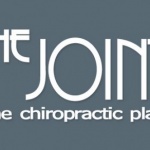November 8, 2018—The American Chiropractic Association reports that in an article published in Minnesota Daily, Michele Maiers, DC, MPH, PhD, comments on a new research study she authored testing the effects of conservative treatment for pain in the elderly. She notes that there is “already pretty good literature” supporting conservative treatment for other adults, but there is a gap in knowledge regarding how seniors respond to this approach.
Maiers, DC, who is also a member of the ACA Board of Governors, notes in the article that a significant amount of participants saw “meaningful improvements in their neck and back-related disabilities and pain” when treated with spinal manipulation and supervised rehabilitative exercises.
This study found that “objective Back and neck pain are associated with disability and loss of independence in older adults.” The study did not conclude whether long-term management using recommended treatments was a better option over shorter-term treatments. The trial was randomized and compared short term treatment, which was 12 weeks, versus long term management, which was 36 weeks, of back and neck related disability in older adults.
The comprehensive research findings are available online.
Source: American Chiropractic Association





